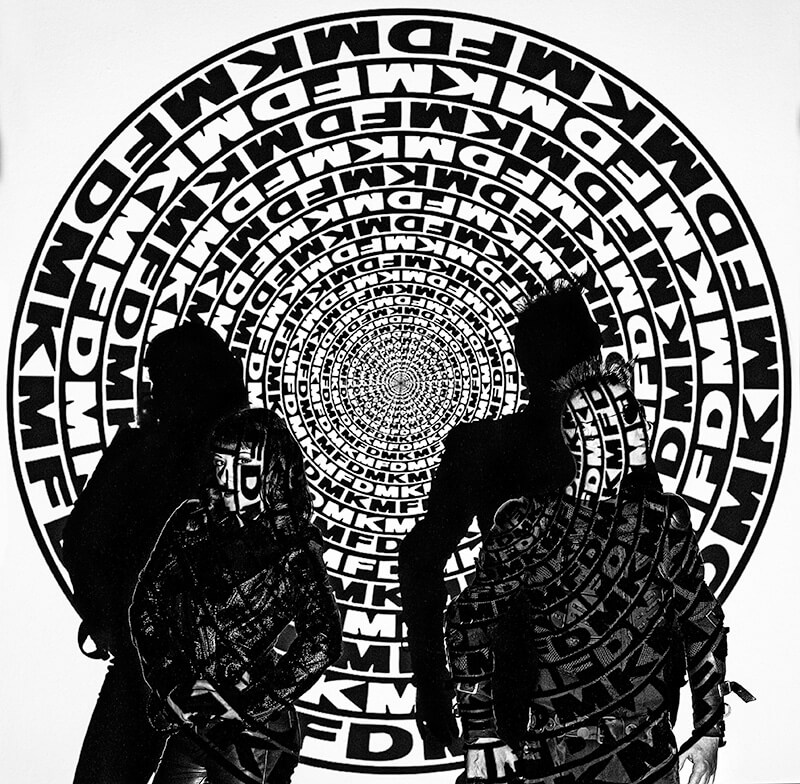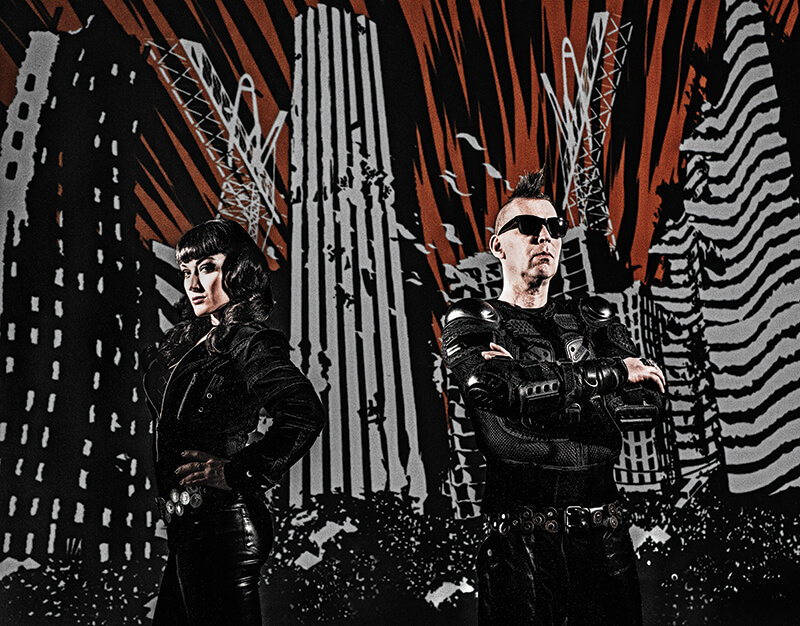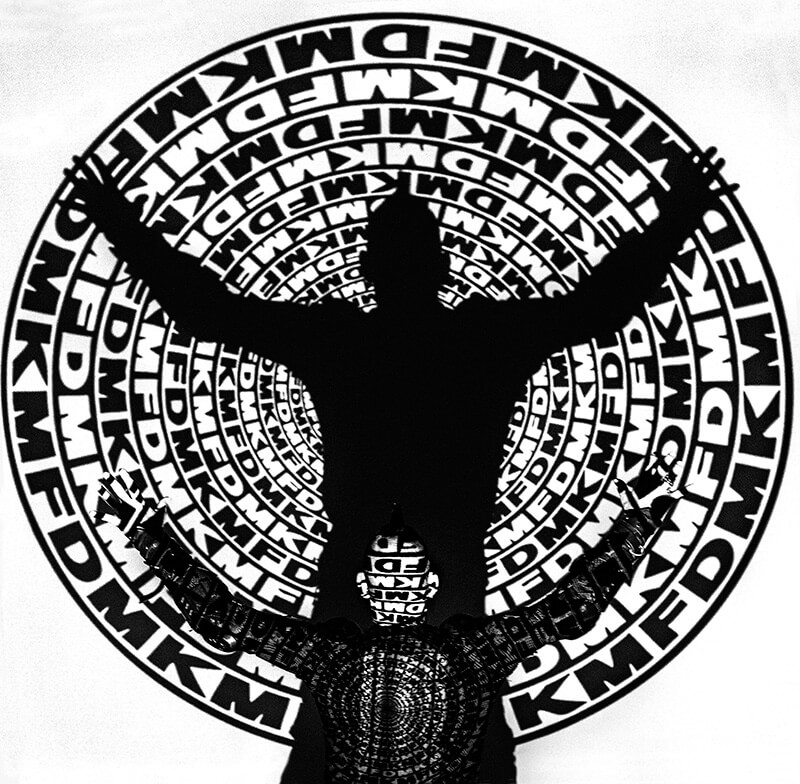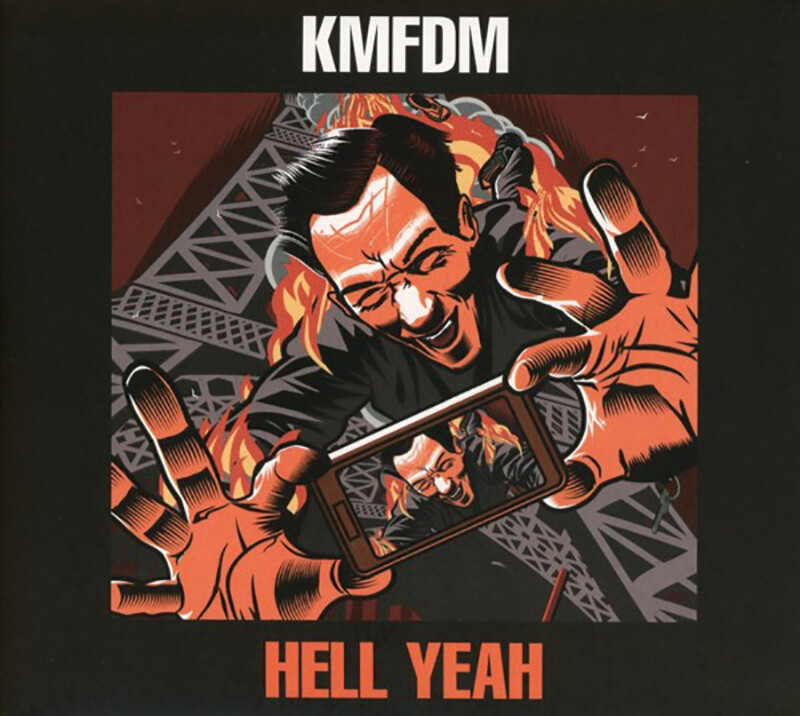KMFDM: Tossing out the Rulebook and Transitioning from Classic Synths to the Digital Domain
When I think of Industrial music, the first band to come to mind is always KMFDM. The Electro-Industrial pioneers have a new album available, Hell Yeah, and as usual it’s nothing short of brilliant. The ambience on the new LP has remained true to the band’s roots — maintaining its dark and catchy melodies, while taking on a whole new identity of its own with its haunting and enchanting anthems. They’re undoubtedly one the most influential bands of all time and their timeless sound has helped pave the way for an array of artists within the Goth scene, as well as various other genres. I was able to speak with the band’s iconic front man, Sascha Konietzko to get some insight on the new album as well as some of the history behind the excellence that is KMFDM.
What were some of the prevalent themes that helped influence the lyrical content on the new album?
The Donald Trump presidency (laughs). No, but the lyrics were written way before that even came into play. I’m being asked this question really every time I do an interview, because it’s so fitting I know. I started writing during Fall of 2015 and there were all kinds of things that attributed to the constructive process, as far as lyrics go. And as time went on (following Trump’s election) it was like “this is the final nail in the coffin,” you know?
Can you reach back and tell me a bit about the formation of the band?
Basically, it was a bit of a coincidence. I was driving a bunch of drunken painters from Hamburg, Germany to Paris, France and we found the place where this art show was going to be taking place. It was a construction site that looked like the Eiffel Tower and someone pointed out that acoustics sounded really horrible inside, and that we should make some noise to accompany this art exhibit. We actually wound up using a bunch of vacuum cleaners and we made this noise collage. And afterwards, I saw Udo (Sturm) at a bar and he said he was looking for artists and asked me if I was an artist. I replied, “Well, probably not in that sense.”
I happened to have a tape of some recordings that I had done and I gave it to him. Think we wound up with a one page record deal…I think a lot of our success revolved around a lot of luck and coincidences. But about a year later I was signed to Wax Trax! Records in Chicago. And the following year after that I was invited to open for Ministry for the “Mind Is a Terrible Thing to Taste” tour which put KMFDM in front of a two thousand plus audience every night for about three months. And from there, I just sold my record collection, threw away all my stuff, flew to Chicago and moved into an apartment and the rest is history. I figured it was either move to the States and make some music, or go back to Europe to my dead-end job. Since I already had experience working in publishing, I knew a thing or two about royalties and whatnot, so it was definitely a risk I was more than willing to take.

photo by Franz Schepers
What were some of your earliest influences?
My parents liked the Beatles and I liked the Rolling Stones. But the first record I ever bought was T-Rex’s The Slider. I was heavily influenced by Glam Rock, like David Bowie obviously. Then came a period in Germany, it was called “Kraut Rock.” It was like this sort of psychedelic type stuff. And all the great industrial music that I liked was starting to come out right after the punk rock movement. And really the two (genres) kind of went hand in hand.
You could be a two-piece band, just a drummer, a singer and a tape deck — and have some balls, do your thing, have something to say and just nail it. And that’s what we did.
Be grateful when people show up to your shows. Be grateful even if you’re just playing for a case of beer and a place on a couch somewhere for the night. And that was the ticket in the States for us. Being grateful. I noticed a lot of bands were ungrateful to their fans and would treat them like shit and I always had the completely opposite reaction. I always try to be as approachable, friendly and thankful towards our fans as possible. I think that really affects not only your reputation with the people who attend your shows, but also the way you play your music in a lot of ways.
What was the first concert experience that really inspired you?
It was The Sex Pistols, I love them. When I was on a class trip from Germany to London for like a week, some kids in my class were saying, “There’s this guy playing tonight” and I must have got on the wrong train because I was thinking, “Well, this isn’t that guy that’s supposed to be playing, but it’s about a hundred times better!” About 20 minutes into the show, the place was trashed. The band was covered in spit and blood and everything was shredded. It was as if a fucking tornado had gone through the place. That was an amazing, destructive, unforgettable experience (laughs).

photo by Franz Schepers
Can you tell me a little bit about the synthesizers that you enjoy using in the studio?
One of the things that’s always accompanied me ever since the early days is the KORG MS-20. I appreciate that model quite a bit, and actually at one point I had like three of them. And then a few years ago I switched from the technical standard of about 2001 to the technical standard of 2014. And I discovered that you can do a lot of different stuff with plug-ins and so I spent all this money on really nice computer stuff and plug ins and I’m much happier now. Because I don’t have to worry about sending the stuff from my studio to be repaired.
You know, you have the hassle of this not working, or that not working, or that not being able to be tuned anymore…you get the idea. Honestly, whether it’s on a sonic level or whatever, I can’t really tell the difference anymore as far as the technology goes. All I know is what I’ve been using lately is very dependable and I’m more than satisfied with the results.
How would you describe the transition in sound on the new album?
I think the main thing that inspired the sound (on the new album) was the fact that we hadn’t recorded anything in a pretty long time. The last studio album came out in 2014, so over the course of three years a lot can change as far as the creative process is concerned. And I think one of the most important things about this album was the fact that I came into it completely refreshed, so to speak. I wanted a fresh new KMFDM album and wanted to do everything in a new way. I didn’t want it to sound like another KMFDM album I wanted something different. It was a totally different setup as far as the music equipment goes, as I said, and it took some time but I think it really helped the evolution and progression of the sound.
What are some of your thoughts on the evolution of the Goth/Industrial scene throughout the years?
It’s odd, because it’s either so great that it doesn’t need to evolve, or it’s so stuck in a rut that it can’t evolve. To me it seems like music in general hasn’t really changed that much at all. Even though we aren’t deliberately trying to emulate an ’80s sound, people always say “KMFDM has that great ’80s sound.” People want their music to sound like bands like Christian Death, The Damned, Fad Gadget or Bauhaus so they kind of shadow that sound. You can make records that sound exactly like Front 242 if you have the money. Ever since the early ’80s things felt a bit stagnant, but it’s not a bad thing. Stagnant in a way that they had picked up on something that sounded really good and a lot of bands just kind of stuck with it and you can still hear it in today’s music.

photo by Franz Schepers
I know it’s a difficult subject to open up about, but can you tell me a bit about the Columbine Massacre and how it affected you, both as a person and as a musician?
It was a remarkable and strange day of my life. I got a call from my manager at the time as I was standing in line at a bank in Seattle, and he said you need to get your ass in front of a television, I don’t know what’s going on but I saw you on TV. I shrugged it off like “yeah, whatever.” So, I finished up my errands and went home and turned on the television. I couldn’t believe it, there were images of bloody people hanging out of windows, SWAT teams, all kinds of crazy stuff. And in the upper right-hand corner of the screen there were these alternating pictures of Nina Hagen, Tim Sköld and myself and I just said, “What the hell is this?!”
So, it took a while for me to actually understand what was going on, and then the telephone started ringing. At first it was like the local Seattle TV station or whatever, then there were some reporters camping out on my lawn which made me pretty uncomfortable because what did I have to do this? It was these two asshole kids. And my initial reaction was, “This is not my problem.” But apparently it was very much my problem. So, the next day I called my publicist and we did this statement to be issued to the media basically saying, “Yeah, what do you want? The kids who shot up their school apparently liked our music. Yeah, we’re German sure, but we’re not Nazis. We don’t condone murder or violence, we’re actually the exact opposite.”
And then 24 to 48 hours later people started hearing KMFDM’s name all over the radio and news stories. Then Marilyn Manson came into the picture and all the attention was kind of all diverted to him. I mean, of course it was shocking to hear that one of the dudes was wearing a KMFDM hat or t-shirt or whatever it was. It was crazy.
Lastly, what advice would you offer to young musicians?
I would say if you think that you have it, then just go balls to the wall. Don’t be shy, just believe in yourself. I think the three keys to success mostly come from luck, attitude and a little bit of talent (laughs).

KMFDM – Hell Yeah
Standout Track: “Hell Yeah”
Follow on Twitter @kmfdmofficial
